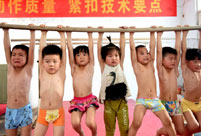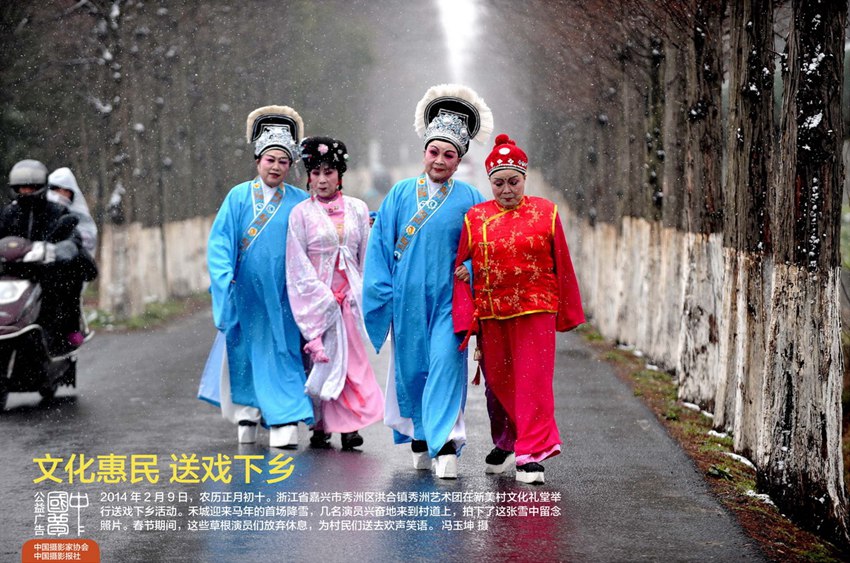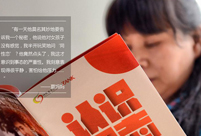 The 4th Chinese National Pole Dance Championship held in Tianjin
The 4th Chinese National Pole Dance Championship held in Tianjin
 Chinese navy commandos debut at 2014 RIMPAC
Chinese navy commandos debut at 2014 RIMPAC
 Guangxi impression: scenic countryside
Guangxi impression: scenic countryside
 World's largest aquatic insect found in Sichuan
World's largest aquatic insect found in Sichuan
 Ceremony volunteers for Youth Olympics make public appearance
Ceremony volunteers for Youth Olympics make public appearance
 A glimpse of female crew of Liaoning aircraft carrier
A glimpse of female crew of Liaoning aircraft carrier
 Stills from "Dad, where are we going?"
Stills from "Dad, where are we going?"
 Legless man's happy life
Legless man's happy life
 Top ten most beautiful islands in China
Top ten most beautiful islands in China
 Aerial view of Hong Kong
Aerial view of Hong Kong
Chinese who are now in their 50s or older probably still remember the Butterfly sewing machine. Back in the era when resources were scarce, it was one of the four most-prized luxury items in China – the other three were the bicycle, radio and wrist watch. But over time, as people's living standards improved and choices broadened, the Butterfly gradually faded from the spotlight, and for a very long period of time many people believed the brand no longer existed at all.
This is why we were amazed to discover that in reality the iconic old brand has not only survived but thrived, albeit in a relatively low-key manner. Today, Butterfly is selling more than two million machines to dozens of developing countries each year, in the same model and looking exactly as they did forty years ago. People who work at the company take pride in the fact, and say they are doing just as well now as when Butterfly was at its prime.
But our amazement did not stop there. As we conducted our research in over 10 distinguished traditional companies in Shanghai, we found that instead of lapsing into oblivion as many people might have supposed, these brands have reinvented themselves through transformation and innovation, and have been repositioning themselves for the global market.
Differentiation
How did the butterfly manage to take to the air once more? An important factor behind its new success is market repositioning.
Due to dwindling market demand, the company called a halt to its domestic sewing machine line and for a time produced sets for industrial use instead. However, with the saturation of the industry and the shock of the global financial crisis, demand for industrial sewing machines too dropped sharply.
Backed into a corner, Butterfly decided to re-launch their domestic sewing machine production and after in-depth market analysis, positioned their machine as a medium that helps turn creative ideas into tangible items.
Starting with a considerable fanfare in 2010, Butterfly launched multiple training courses in residential neighborhoods and schools in Shanghai, teaching sewing techniques and more importantly, encouraging people to have fun with their sewing machines; in the meantime, the old Butterfly retail shops were revamped into experience stores where customers can buy as well as learn (for free) how to use sewing machines.
These two major repositioning steps have flung the gates open to growing customer loyalty and a rapid increase in sales for Butterfly.
"The path of differentiation is the path we want to pursue for our development," says Fang Haixiang, general manager of Shanghai Shanggong Butterfly Sewing Machine Company.
Like Butterfly, Zhong Hua Pencil has also blazed its way to new markets through differentiation. Zhong Hua pencil now takes 20 percent of the Chinese market and half of its 1.5 billion yearly output is sold overseas. Pencil manufacturing is a low-entry business where newcomers abound. How does Zhong Hua retain its leadership in the industry?
"In the past, we made pencils of up to 6B grade; now we've expanded the range to 12B," says Huang Hua, general manager of China First Pencil, the company that produces Zhong Hua pencil.
"We have maintained the high standard to which we have always held ourselves, but at the same time we have also brought high-tech and fashion elements into our products. We want to keep offering our customers the sense of freshness," says Huang.
Zhong Hua has also set a new bar in the industry by producing Shenzhou 7 pencils that can withstand dramatic temperature differences and won't break in zero-gravity.
"We have what others don't have, we can produce everything that others can produce, and we do better what other do well," says Huang.
 |
 Zhujiang ambassadors attend lotus lanterns activity
Zhujiang ambassadors attend lotus lanterns activity
 From girly girl to tough special police officer
From girly girl to tough special police officer
 Children attend gymnastics training in summer
Children attend gymnastics training in summer
 Beautiful sceneries along the special travel route in Xinjiang
Beautiful sceneries along the special travel route in Xinjiang
 Focus on 1st female patrol team in Turpan
Focus on 1st female patrol team in Turpan
 Collection of 'China Dream' public-spirited ads
Collection of 'China Dream' public-spirited ads  National fitness team members integrate traditional and modern beauty
National fitness team members integrate traditional and modern beauty Moms on their kid’s coming out
Moms on their kid’s coming out Chinese fighters through lens
Chinese fighters through lens
 48 hours after super Typhoon Rammasun
48 hours after super Typhoon Rammasun Bikini show held at water park in Xi'an
Bikini show held at water park in Xi'an
 Lobster vs cat: catch me if you can
Lobster vs cat: catch me if you can  Heat waves sweep China
Heat waves sweep China  Top 10 most beautiful islands in China
Top 10 most beautiful islands in China
 Zhou Xun announces engagement to Archie Gao
Zhou Xun announces engagement to Archie Gao
Day|Week|Month